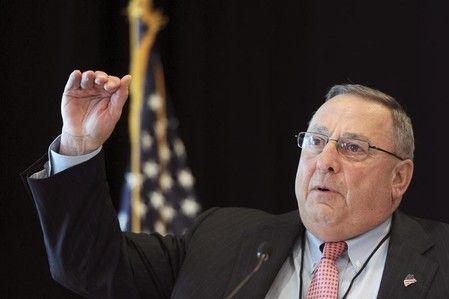Advertisement
Study: Older Conservatives Most Likely to Visit Fake News Sites, Less Likely to Fact-Check
By Jason Owen
2 min read
Advertisement - Continue reading below

Are you out there clicking on fake news websites and not verifying the information through fact-checkers? If you’re older and lean conservative, the answer may be “Yes” according to a new study of online behavior. That’s the conclusion of Dartmouth University researchers about the “exposure to misinformation” consumed during the 2016 U.S. presidential election.
The study examined survey responses and the browser history of a “representative example” of 2,525 Americans. They found that a quarter of those people visited a fake news site between Oct. 7 and Nov. 14, 2016. According to the researchers’ findings, “Trump supporters visited the most fake news websites, which were overwhelmingly pro-Trump.”
But the researchers are quick to point out that it’s not an ideology-wide problem and is concentrated mostly to a small percentage of older conservatives.
“However, fake news consumption was heavily concentrated among a small group — almost six-in-10 visits to fake news websites came from the 10 percent of people with the most conservative online information diets,” the authors wrote.
The authors are quick to throw water on the idea that many Americans are trapped in “echo chambers” and “filter bubbles,” which is a silver lining of their research, but still see a risk to more Americans becoming highly polarized.
“Behavioral data indicates that only a subset of Americans have heavily skewed media consumption patterns,” noted the authors. “However, the risk of information polarization remains.”
The authors also called out Facebook “as the most important mechanism facilitating the spread of fake news and show that fact-checking largely failed to effectively reach consumers of fake news.”
This isn’t to say that people alone are really to blame for their viewing habits. Many websites are created solely to generate profits by any means necessary. These websites “sometimes publish accurate information,” but also “frequently publish false claims, distort genuine news reports, and copy or repurpose content from other outlets. … Some content is deeply misleading or fabricated (e.g. the “Pizzagate” conspiracy theory), while other articles instead selectively amplify political events in an over-the-top style that flatters the prejudices of a candidate’s supporters.”
All in all, the study estimates that 27.4 percent of Americans, or an estimated 65 million people, ages 18 years or older visited an article on a pro-Clinton or pro-Trump fake news site during the study dates. In the sample set, 40 percent of Trump supporters read at least one article from a pro-Trump fake news site, compared to 15 percent of Clinton supporters visiting at least one pro-Clinton fake news site.
You can read the full study, “Selective Exposure to Misinformation: Evidence from the consumption of fake news during the 2016 U.S. presidential campaign,” here.
Advertisement - Continue reading below










